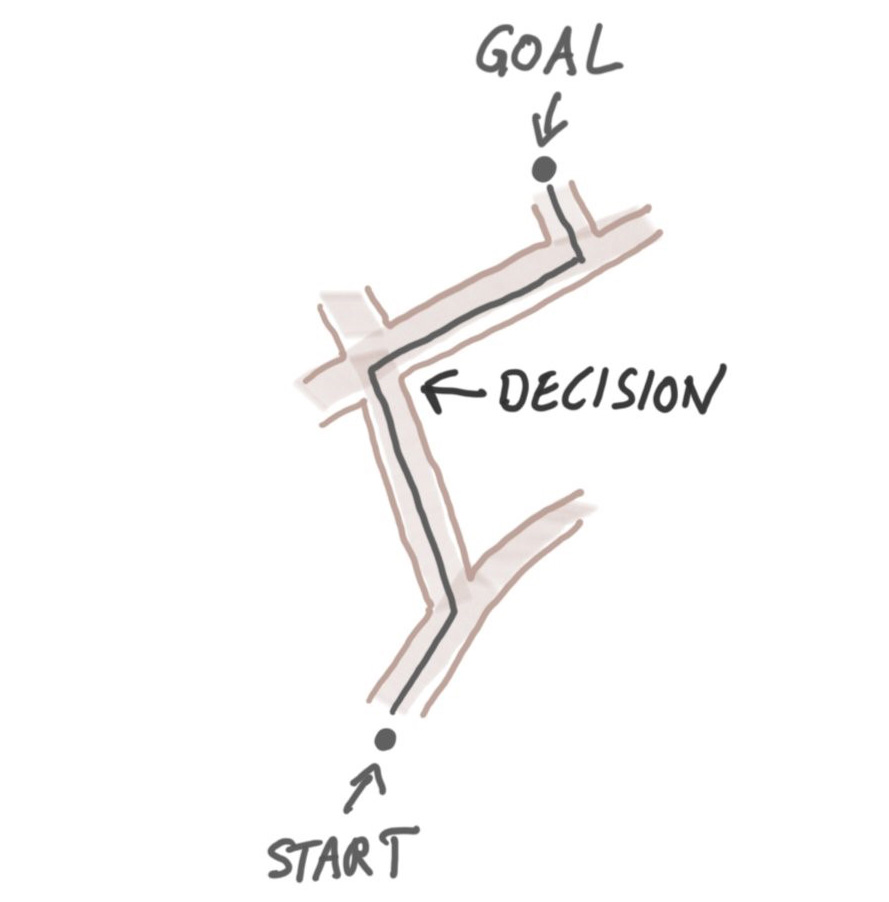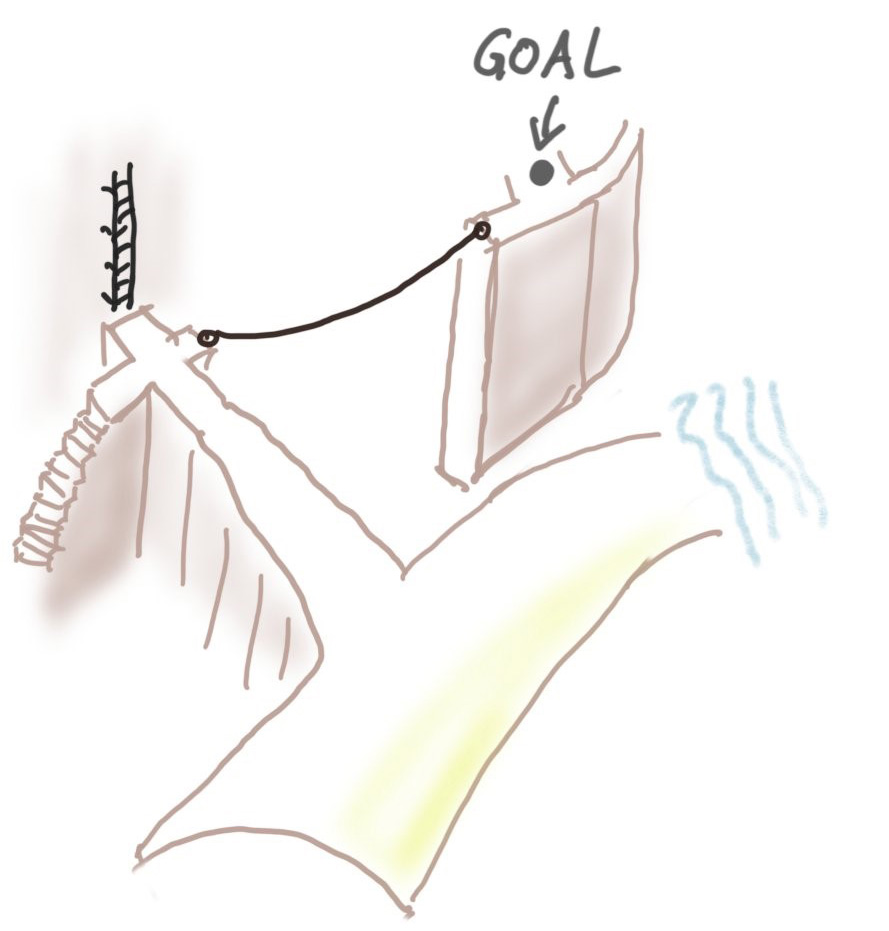AWS Cloud Enterprise Strategy Blog
Thinking Strategy? Add Dimensions!
My peers and I carry the ominous title of Enterprise Strategist at AWS. While perhaps we aren’t entirely immune to title inflation, one could reasonably assume that we know a thing or two about enterprises and strategy in particular. After all, we are former CIOs, CTOs, Chief Architects, and IT leaders and have executed major cloud migrations and organizational transformations ourselves. What we don’t do, though, is hand our customers a ready-made cloud strategy. A strategy can only be successful if it accounts for an organization’s existing strengths as well as the constraints that it operates under. A strategy, therefore, isn’t something you can copy and paste from a template or another customer (or even from Amazon).
What our team does instead is help customers articulate their strategy. What questions should they ask? What are the critical decisions they need to make? Where can they start? When should they stick to their strategy and when should they adjust it to new circumstances? Within the scope and complexity of modern IT organizations, these are critical questions to ask. But they aren’t easy to answer, so we are happy to assist.
From those conversations as well as our own experiences, we have learned many aspects that help make a strategy successful. We have also discovered several common pitfalls. I want to share one pitfall that’s particularly easy to drop into. And that is a strategy that’s lacking important dimensions. Being a fan of visual thinking and metaphors, I present a visual metaphor to help guide your strategic thinking. It starts simple: with a dot.
One Dimension: The Goal
A strategy—whether it’s for your business, your whole IT, or the cloud specifically—is a tool that helps your organization achieve a set of goals. As obvious as that might seem, it’s also the the first common pitfall: “strategies” that aren’t really strategies. Freek Vermeulen points clearly spells out this trap in his HBR article “Many Strategies Fail Because They’re Not Actually Strategies”:
Many so-called strategies are in fact goals. “We want to be the number one or number two in all the markets in which we operate” is one of those. It does not tell you what you are going to do; all it does is tell you what you hope the outcome will be.
If you’re articulating a cloud strategy, you might be tempted to include something like “we will migrate 80% of our workload to the cloud by end of 2021” or “we will reduce our infrastructure cost by 30%.” Both are excellent and, thanks to modern tech and approaches, quite achievable goals. But they aren’t strategies.

This trap is easy to fall into even for quite mature organizations because those ostensible “strategies” sound absolutely great. That’s because they are little more than wishes—and wishing is free. Alas, as I describe in my book Cloud Strategy, most wishes don’t come true. For that, you need an actual strategy. Such a strategy will need to answer questions like which workloads will you migrate first? Are you modernizing applications before moving or replacing some altogether? How will you handle interdependencies?
Strategies that just set a goal but fail to describe a viable path there are like putting a dot on a blank canvas and saying “that’s where we want to be.” I compare this to thinking in a single dimension. (Mathematically inclined readers might interject that a point has two coordinates, and hence sits on a two-dimensional plane. However, that’d require you to know what dimensions the axes represent and the precise location of the dot. As neither is likely the case, I take the stricter view and allow the dot only one dimension.)
Two Dimensions: The Path
Among the many definitions of what a strategy is, I frequently (and perhaps slightly cheekily) come back to my own:
A strategy is a series of meaningful decisions: those where you could have gone left but you chose to go right.
These decisions are like forks in a road. Knowing where the road forks means knowing what decisions are available and what options each path represents. Then, you need to pick one option and be clear as to why that’s the best choice for you to get from A to B. Freek Vermeulen tends to agree:
A real strategy involves a clear set of choices that define what you are going to do and what you’re not going to do. Many strategies fail…because they do not represent a set of clear choices.
Real-life strategies aren’t straight lines. A cloud migration might start with lifting and shifting applications, followed by incremental rearchitecting to break the monolith, and ultimately rewriting several services to be cloud native. In another fork in the road, you might carefully assess your IT inventory first and select the best option for each workload. Or you might “go all in” to gain better transparency and subsequently make a better choice. All are viable options; your strategy is defined by the ones you pick.

Strategies are like a path from point A to point B. While knowing both points is helpful, the path you take dictates the critical decisions you’ll need to make and thus your strategy. Those decisions are the forks in the road and show which route you took. Some paths may lead into dead ends or long detours, so it’s good to plot the path wisely. Adding this second dimension of time to your strategy allows you to better articulate your choices.
Three Dimensions: The Terrain
Recent times have reminded us, though, that walking the path isn’t as easy as drawing it on a map. There might be a treasure hidden on that island in the corner of the map, but there’s stormy seas and sharks and sirens along the way, making the treasure hunt nothing like a straight line. The same will be true for your business strategy and your cloud strategy: you might have identified a valid shortcut but it turns out to be a walk on a tightrope where a single misstep might cause lengthy delays.
In a business and technology environment, it’s not only a matter of you making a wrong step. The ground might also shift under your feet: a pandemic can dramatically shift commerce from physical retail to online channels. It can also make working from home the new norm. Product evolution can make existing approaches obsolete or open up new pathways. Lastly, competitors will also be maneuvering, possibly making your original goal and path less attractive.
The cloud offers many features that can help you deal with such uncertainty. Scalable applications and elastic infrastructure can prepare you well for sudden shifts in demand across channels. Well-greased software delivery pipelines make it much easier for you to deploy solutions that address shifting customer or market needs.

Your strategy should go beyond just showing your chosen path. It should also show the terrain that it sits on. This third dimension tells you if you are strolling along gentle slopes with a lot of leeway, balancing on a narrow ridge with steep drops, or climbing up a sheer cliff on a via ferrata.
Adding this dimension contributes an important element to your strategy: it articulates execution effort (the shortest path is often the steepest), risk (how tolerant is your strategy against unavoidable missteps), and resilience against external events (what happens if your ground shifts five meters to the right). It also shows you what type of equipment you might need to execute the strategy: can you traverse the path in sneakers, or do you need a full harness and climbing gear?
Simple Models for a Complex World
The metaphor and the associated model of a point, a path, and the terrain are very simple. That’s intentional. Strategy in today’s fast-moving environment is complicated. Models, on the other hand, shouldn’t be—they are there to help you see the forest for the trees and tackle complexity. Like plotting a strategy in three dimensions.